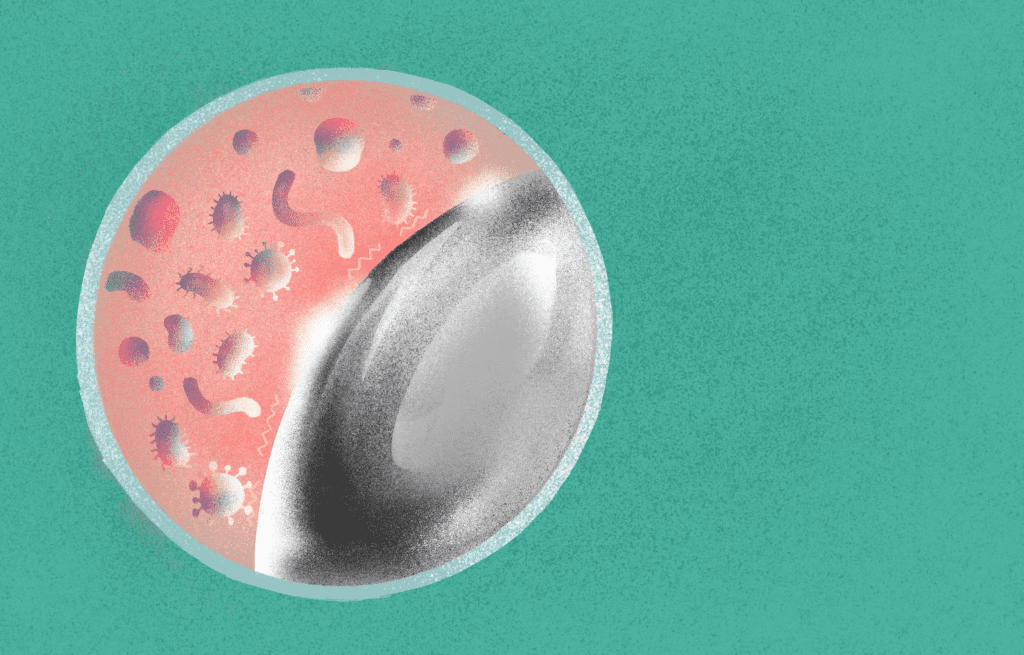

Nanotechnology startup EVŌQ Nano may have brought us the next great tool in our fight against HAIs and antimicrobial resistance (AMR).
It’s smaller than you can imagine, but it packs a big punch to microbes.
It’s every hospitalist’s nightmare.
A patient in the hospital for a routine procedure suddenly has a fever. Their skin is hot to the touch, swollen. They’ve clearly come down with a healthcare- associated infection (HAI)—but which? And will this bug respond to the available antibiotics? Or is it a deadly, antibiotic-resistant menace that threatens even more people’s health than just this one patient?
These are just some of the questions providers need to worry about when responding to HAIs—which are ultimately preventable.
Nanotechnology startup EVŌQ Nano may have brought us the next great tool in our fight against HAIs and antimicrobial resistance (AMR).
It’s smaller than you can imagine, but it packs a big punch to microbes.
Nanotech vs. microbes
The company’s EVQ-218 nanoparticle will target the catheter market, aiming to make an impact in the medical devices where healthcare-associated infections (HAIs) often begin.
The nanoscience company conducted lab tests with leading catheter manufacturers, finding that catheters embedded with EVQ-218 effectively stave off the biggest HAI culprits with their antibacterial, antifungal, and antibiofilm properties. The pathogens tested against include Staphylococcus aureus, Pseudomonas aeruginosa, and Candida albicans.
“With its proven ability to resist microbial growth and biofilm formation without triggering antimicrobial resistance, this platform has the potential to significantly impact device- related infections—much like the antibiotic revolution transformed infectious disease treatment a century ago,” said EVŌQ Nano CEO Shaun Rothwell.
But how does this tiny particle fight all of these pathogens?
EVQ-218 is a non-ionic silver nanoparticle. You may recognize silver as an antibacterial agent if you’ve bought or seen advertisements for “naturally antibacterial” or odor-reducing bedsheets and athletic gear, which use silver fibers for this same purpose.
The silver nanoparticle works by capturing sulfur, which stops bacterial metabolism while leaving the cell structure intact. That latter function is what lowers the likelihood of bacterial mutations—the key ingredient in AMR.
Plus, the non-ionic aspect eliminates the risk of silver ions converting to silver sulphide or silver chloride, which diminishes the antimicrobial effectiveness of many other silver-based antimicrobial approaches.
“With its proven ability to resist microbial growth and biofilm formation without triggering antimicrobial resistance, this platform has the potential to significantly impact device-related infections—much like the antibiotic revolution transformed infectious disease treatment a century ago,” said EVŌQ Nano CEO Shaun Rothwell.
Investment in AMR
We’ve discussed the threats of antimicrobial resistance—it’s a critical issue that our best minds need to help address.
In fact, this issue is more urgent than ever before. AMR levels increased through the COVID-19 pandemic as infectious disease resources were diverted to fighting respiratory disease and many acutely-ill patients ended up in hospitals.
And similarly to COVID, AMR is a global issue, requiring a coordinated, international response.
Yet, since that antibiotic revolution Rothwell referred to, there has not been too much movement historically on the antibiotic front—at least not since an active R&D period from 1940 to 1980.
New antibiotics that have hit the market over the years are often adaptations of previously developed antibiotics. This made them more vulnerable to cross- resistance.
Plus, this area of medical innovation hasn’t felt “hot” to many in our industry. At the 2024 World Economic Forum meeting in Davos, Switzerland, Roche Chairman Severin Schwan called out AMR as a timely innovation priority. He noted that, despite the high need for innovation in this area, companies have been leaving this sector, likely due to a perception that there isn’t an easy path to business sustainability.
Beyond EVŌQ, startups doing the work in this area are largely in pharmaceuticals and the life sciences. Interesting players include:
Aurobac Therapeutics, a precision medicine company focusing on rapid diagnostics and pathogen identification
IN-ARMOR Project, a collaboration between the University of Iceland and Akthelia Pharmaceuticals working on immunotherapy
Bugworks, an AI-enabled drug development company focusing on drug- resistant infections
Adaptive Phage Therapeutics, a startup developing therapeutics with curated bacteriophages
We hope that more innovators answer Schwan’s call to action. We’re especially encouraged to see the device industry getting involved in the partnership with EVŌQ. It’s a promising sign that our industry recognizes the need to see the long-view when it comes to issues like AMR.
Profitability is critical, yes. But creating products that serve patients and providers through tomorrow’s biggest health threats is also key to a sustainable business—and the healthy future we all deserve.
Please provide your information to discuss partnership or employment opportunities.